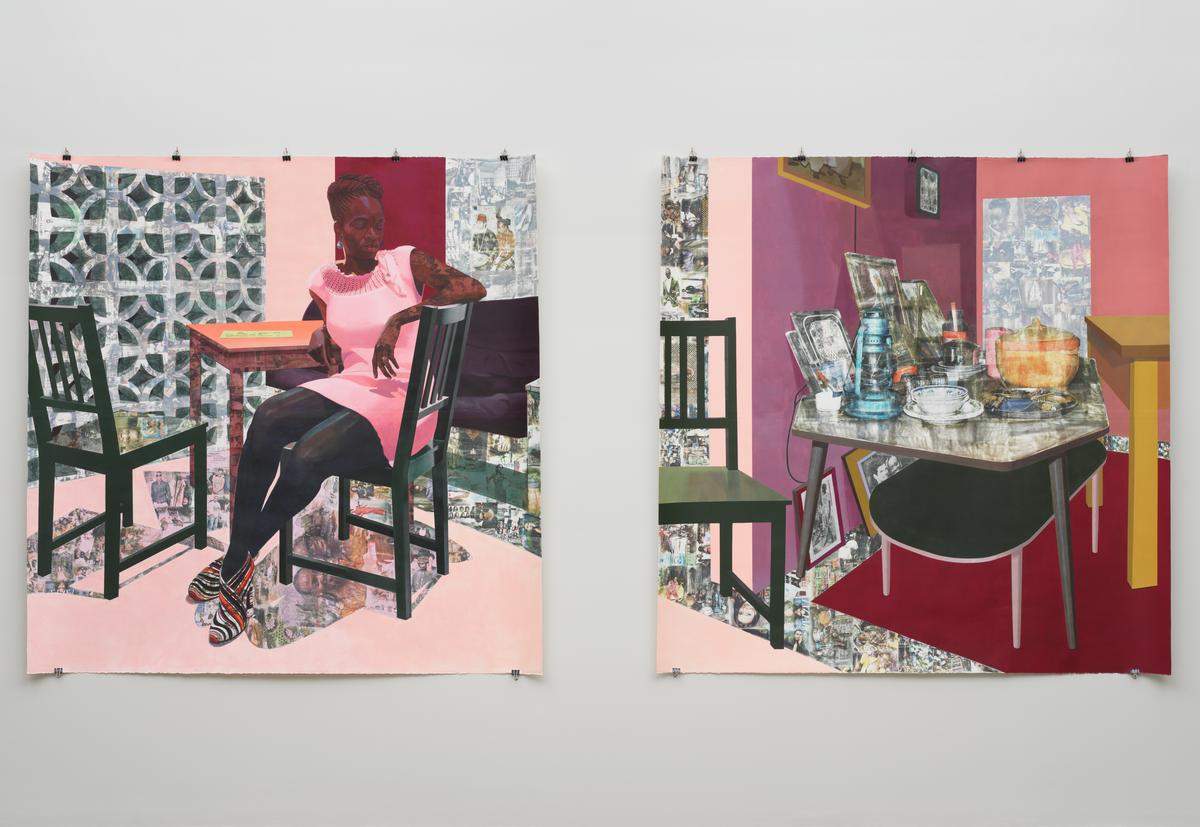The National Gallery of Victoria’s (NGV, 2021) ‘Big Weather’ visually engaging learning resource combines First Nations knowledges, climate education, art and history through gallery-based (Ian Potter Centre, 2021) and digital teaching and learning. Despite the gallery exhibition ending in 2022, the NGV (2021) have developed a learning resource to support the teaching and learning when viewing through the online gallery format.
This resource provides learners with a range of diverse works along with providing both teachers and learners with learning objectives and curriculum links for the relevant learning areas in the Victorian Curriculum (n.d). The works presented in ‘Big Weather’ explore the uniqueness of Australia’s weather systems focussing on the generational cultural knowledge of First Nations people being central to the understanding of Australia’s natural environment. In addition to this, the NGV (2022) has created sentence starters to scaffold student learning using questioning that relates to each individual artwork.
Teachers can incorporate Yunkaporta’s (2009) eight-ways pedagogical approach through incorporating culturally responsive pedagogy (CRP) in their teaching of First Nations People’s artwork within this resource.
Great Art Explained (2022) Yayoi Kusama resource provides students at a year 7-8 level with a high quality, curriculum aligned video to assist both the teaching and learning relating to the artwork and history of Yayoi Kusama. Relating to the Victorian Curriculum, this resource engages in learners’ ability to explore and express ideas (VCAVAE033, VCAVAE034), respond to and interpret artworks (VCAVAR038) and develop visual arts practices (VCAVAV036) VCAA (2016). This resource provides teachers a visually engaging learning activity for students to follow which can be broken down and target both art making and analysis and reflection of artwork and artists in both a historical and contemporary context. Throughout the learning of Yayoi Kusama’s artwork, teachers can engage with both Moll et al.’s (1992), virtual schoolbag and Bronfenbrenner’s (1979) socio-ecological model to identify and reflect on the influences on both Yayoi Kusama as an artist but on the learners as creators of art and audiences of artworks. Such pedagogical approaches allow teachers to promote the influence of context, culture and community throughout the learning.
Tate’s (n.d.) art makes resource is a practical and simple to follow lesson designed to focus on students’ development and understanding of storytelling, identity, community and memory through using drawing, collaging and painting skills. This resource is presented in the context of the English education system targeting Key Stage 1-5, requiring Victorian teachers to identify and align this learning activity to the Victorian Curriculum (VCAA, n.d.). When relating to the levels 7 and 8 content descriptors in the Victorian Curriculum, both VCAVAE033, VCAVAV035 and VCAVAR038 could be engaged with requiring students to explore and express ideas, experiment with materials, techniques, technologies and processes along with analysing how ideas and viewpoints are expressed in artworks. When incorporating this resource in the teaching and learning of storytelling and identity in art, teachers should acknowledge that each learner brings their own ‘Virtual schoolbag’ to the classroom consisting of their lived experiences and cultural contexts (Moll et al., 1992). In considering this, teachers should understand that not all students will have similar experiences some of which can be traumatic.
This resource is designed in a simple step-by-step layout for teachers to easily follow as a simple lesson which explores the example artwork, utilises questioning to encourage students to analyse the artwork in a collaborative manner, provides a history of the artwork and outlines both how students should create their work and how teachers should structure the lesson.
Furthermore, this Tate resource provides excellent opportunity for students to extend their learning through collaboration with their peers, cutting their work in half and swapping pieces or inviting others to add to their piece to create further worlds in their artwork. This resource can be used as a quick go-to lesson to engage students in the creation of personal artwork that represents identity with the sample artwork being interchangeable if required to personalised for any school’s context.



